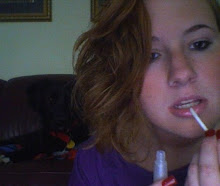
I thought this post on the new sugar guidelines was appropriate, seeing as Halloween is this weekend.
The American Heart Association has posted new guidelines on daily sugar reccommendation. According to an article by the Chicago Tribune, "New guidelines from the American Heart Association point to added sugars as a risk factor for cardiovascular disease. The sugar recommendations are the strictest of any major health organizations' guidelines, and they've stirred up a debate."
The article also lists the new guidelines:
The new AHA guidelines say most women should eat no more than 100 calories of added sugars per day, or 6 teaspoons (25 grams), which is less than what you'd find in a can of soda. Men are advised to keep added sugars to just 150 calories or 9 teaspoons (37 grams).
That's far below the 355 calories or 22 teaspoons of added sugars consumed by the average American each day, according to the most recent government food consumption surveys, which show that our sugar intake is inching up each year.
With Halloween coming up, I decided to look at the amount of sugar (compliments of Nutrition Data) in my favorite candy, Skittles. A 1 serving 2.7 oz pack of Skittles has 47 grams of sugar. Nearly twice the amount of the daily recommendation of 25 grams.


Does added sugar mean the sugar in processed foods? So the sugar contents of things like fruits and veggies aren't included in that?
ReplyDeleteAlso, 47 grams of sugar is undoubtedly more than the recommended daily 100 calories of sugar. The recommended daily limit is 25 grams, which means that one pack of Skittles actually has nearly twice the amount. Ouch. That sucks. Skittles are delicious.
ReplyDeleteAlso, you might find this interesting (I know I did):
ReplyDeletehttp://www.grist.org/article/scientists-claim-junk-food-is-as-addictive-as-heroin
Argh. I read 100 calories as 100 grams. You're right. Kill me. No more skittles. And yes, the article clarifies the difference between added sugar and natural sugar.
ReplyDelete